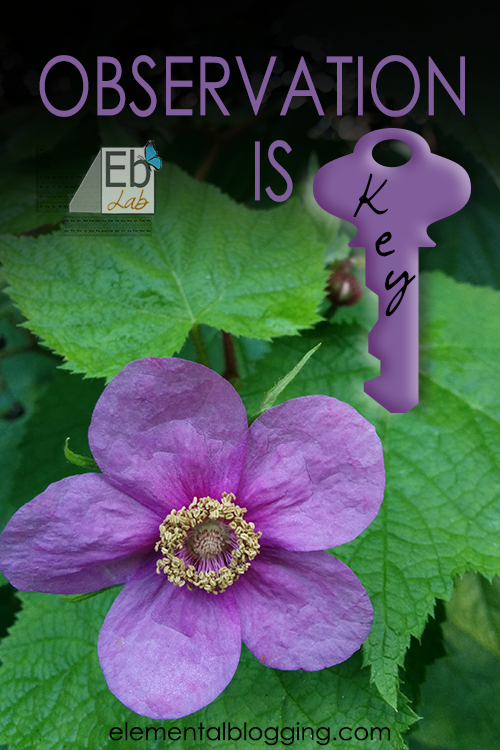 Observation is a key ability for all scientists to possess, but what exactly is observation?
Observation is a key ability for all scientists to possess, but what exactly is observation?
Webster’s says:
- Observation — an act or instance of noticing or perceiving, an act or instance of regarding attentively or watching.
Simply put, observation is taking the time to look at the things going on around you. It’s intentionally watching what is happening right in front of you.
The scientist frequently draws upon his or her capacity to observe as he or she employs the scientific method. So, it is important that we convey these abilities to our students. We must develop and build upon this skill throughout their educational journey.
They will need to frequently exercise their observation muscles so that they will become strong. There are many ways you can do this, but two of the primary tools you can use are nature study and scientific tests.
Observation in Nature Study
Nature study at its core is about taking a closer look at the natural world around us. The students look at their environment and note the plants and animals they see. They attempt to detect the movement and behaviors of the animals in the area.
In essence, they search for science in nature using their powers of observation.
Nature study empowers the students to examine and learn about their environment as they exercise their observations muscles. It can be a scheduled part of your week or a natural extension of your life.
Either way, nature study can be an indispensable tool you use to increase your students’ observation abilities.
Observation in Scientific Tests
Scientific tests examine the principles of science in a controlled environment. In the educational setting they serve as the hands-on application of what our students learn from a textbook. There are two main types of scientific tests that we as homeschoolers routinely use — scientific demonstrations and experiments.
A scientific demonstration allows the students to see the principles of science firsthand. The teacher introduces the students to the scientific method through modeling the process for them. The student focuses on observing what is happening, absorbing the information and storing it for later use. While the student may participate, the teacher remains the driving force behind this type of scientific test. Using scientific demonstrations early on will help to develop the students’ powers of observation.
An experiment is a test or trail done for the purpose of discovering something unknown or validating a theoretical principle. In the educational setting, the student is the driving force behind the experiment, while the teacher plays a more supervisory role. In this type of scientific test, the students are observing a new aspect of science that was previously unknown to them. Experiments serve to exercise and strengthen the students’ powers of observation.
Generally, we use scientific demonstrations in the early years and move into experiments as the students grow older.
Both of these types of scientific tests require the students to observe. For this reason, scientific tests are a vital tool for teaching your students observation skills.
Conclusion
Both nature study and scientific tests will build your students’ powers of observation. You can choose to use only nature study or rely solely on scientific demonstrations and experiments. Or you could choose to blend these two methods as you seek to instill in your students how to observe.
Either way, teaching the foundational skill of observation should be done early and often in science education.
 Sign up below to receive weekly tips & tools for homeschool science and we'll send you a FREE copy of
Sign up below to receive weekly tips & tools for homeschool science and we'll send you a FREE copy of 